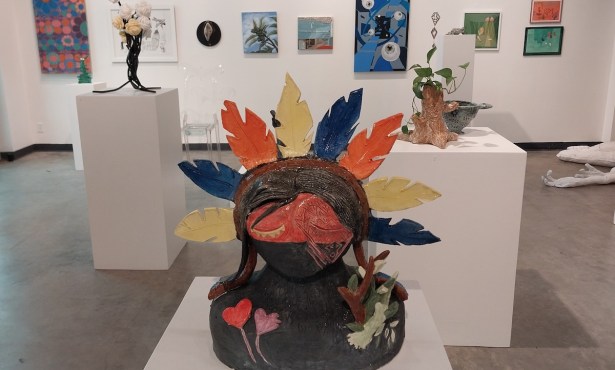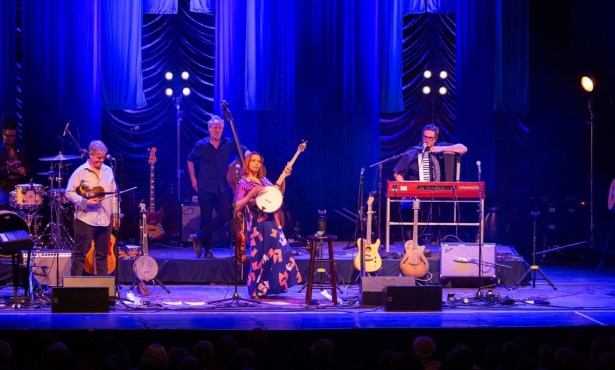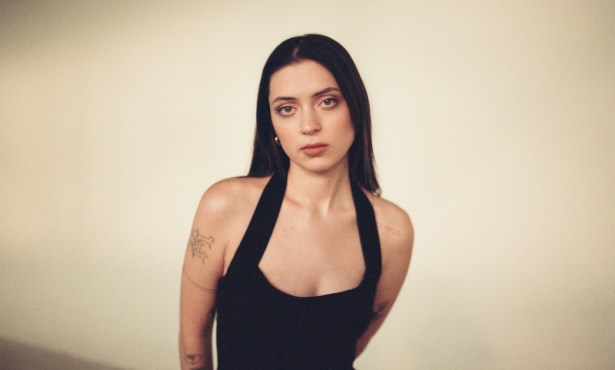Continuing the Latino Tradition. At Channing Peake Gallery. Shows through July 20.
A Tradition of Inquiry

For the artists in Continuing the Latino Tradition, a group exhibition at the Channing Peake Gallery curated by longtime Santa Barbara teacher Ditti Wolff, tradition is a slippery term. Wolff has brought together a diverse and impressive array of contemporary artists living and working in California, all of whom explore the meaning of “Latino tradition” by probing, questioning, and reworking the images and iconic symbols of Latino heritage. Although Wolff has purposefully chosen artists with varying degrees of education and professional experience in art-making, there is a common impulse between them. By evoking a spirit of self-critique and identity politics, these artists question the very term “tradition.”
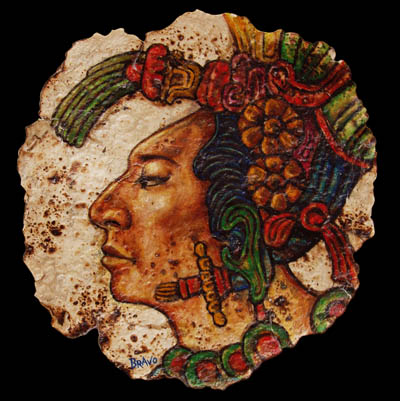
The most obvious example of this strategy is Joe Bravo, whose portrait of a Maya king on a giant flour tortilla turns a staple of Mexican gastronomy into an unlikely canvas. With stylistic cues like a giant elaborate headdress and portrait done in profile, the image is immediately recognizable as belonging to Maya culture. In combining ancient Latino symbols and universally popular Latin food, Bravo celebrates a cultural history while playing on the stereotypes that surround it.
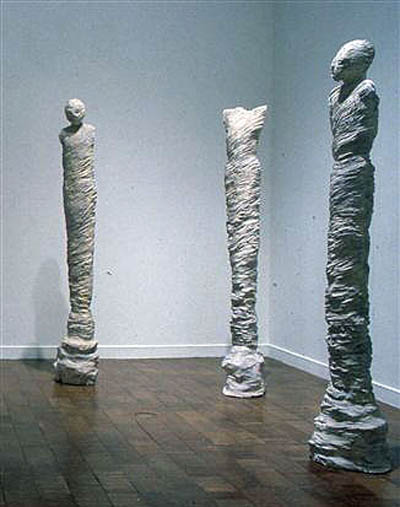
In another instance of contemporary culture meeting historical tradition, Abel Alejandre’s oversized, black-and-white painting of two men engaged in a fight could easily have been taken from a newspaper story about a local conflict. Upon closer inspection, the swirling lines and urgent sense of movement in the painting are more suggestive of a celebratory dance.
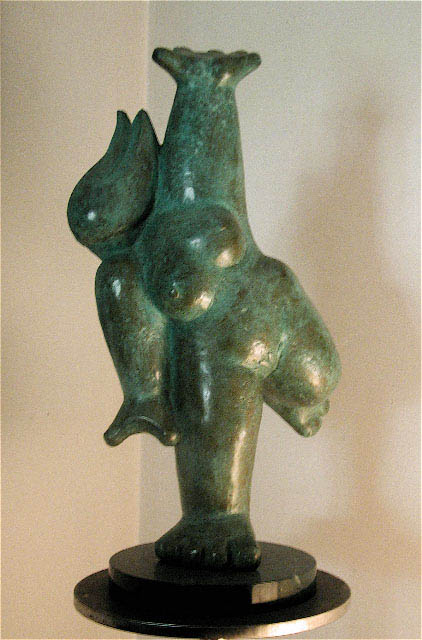
Although the exhibition consists primarily of paintings, three-dimensional works steal the show. Sculptor Susan Elizalde-Holler expertly melds mixed media into four-foot tall figures that seem to have risen from the earth’s dust. Their nod to Greek sculpture is balanced by references to prehistoric imagery. The other three-dimensional artist in the show, Armando Baeza, pays homage to pre-Columbian sculptures with his playful bronze sculptures of robust, squat figures. The seriousness of Elizalde-Holler’s pieces juxtaposed with the delightfulness of Baeza’s work exemplifies the opposing forces that make this show so interesting.
Though many of the works use similar palettes or painting styles, it is individualism that marks this exhibition. Exploring the Latino tradition may be the tie that binds these artists together, but expressing the cultural experience is a distinctly subjective pursuit.

